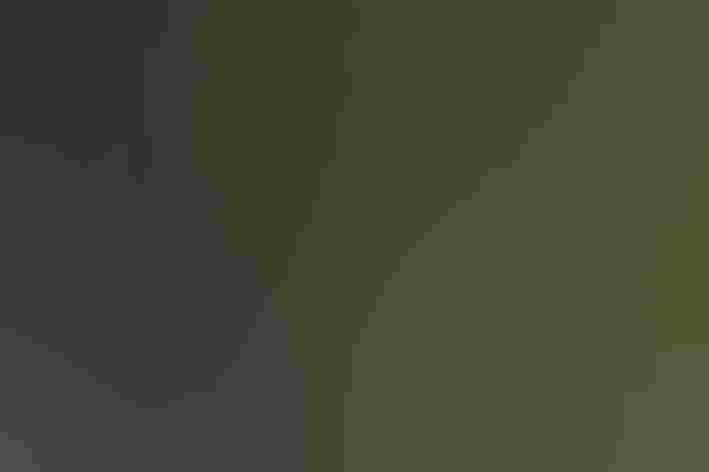Field Sparrow
At a Glance
The plaintive whistled song of the Field Sparrow often can be heard in brushy pastures, even on hot summer days when most birds are silent. Despite the name, this is not one of the sparrows inhabiting open fields of grass; it prefers brushy places, overgrown meadows with many bushes. It looks distinctively small and long-tailed, and its plain face gives it an innocent expression to match the sweetness of its song. In winter, Field Sparrows gather in small flocks.
All bird guide text and rangemaps adapted from by Kenn Kaufman© 1996, used by permission of Houghton Mifflin Harcourt Publishing Company. All rights reserved.
Category
New World Sparrows, Perching Birds
IUCN Status
Least Concern
Habitat
Fields, Meadows, and Grasslands, Shrublands, Savannas, and Thickets
Region
Eastern Canada, Florida, Great Lakes, Mid Atlantic, New England, Plains, Rocky Mountains, Southeast, Southwest, Texas, Western Canada
Behavior
Direct Flight
Population
9.300.000
Range & Identification
Migration & Range Maps
Partial migrant. Northernmost breeders move south in fall; southern breeders may move only short distance or may be permanently resident. In spring in northern areas, males arrive 2-3 weeks before females.
Description
5 1/4" (13 cm). Rusty cap, pink bill, faint whitish eye-ring, pale rusty eyeline. Plain face gives it an innocent" expression. Looks long-tailed for its size. Chipping Sparrow in winter may have pink bill, but has stronger dark eyeline.
Size
About the size of a Sparrow
Color
Black, Brown, Gray, Pink, Red, Tan, White
Wing Shape
Broad
Tail Shape
Notched, Rounded, Square-tipped
Songs and Calls
A series of soft, plaintive notes, all on the same pitch, accelerating to a trill at the end.
Call Pattern
Falling
Call Type
Chirp/Chip, Trill, Whistle
Habitat
Bushy pastures, brush, scrub. Found at all seasons in brushy overgrown fields, second growth, woodland edges, hedgerows in open country. Sometimes around brushy edges of marshes. Does not usually live in wide-open grassy fields unless they contain scattered shrubs.
Sign up for ÃÛèÖAPP's newsletter to learn more about birds like the Field Sparrow
Behavior
Eggs
3-5, rarely 2-6. Whitish to pale bluish white, with brownish spots often concentrated at larger end. Incubation is by female only, 10-12 days, rarely up to 17 days in cold spring. Nests parasitized by Brown-headed Cowbirds are often deserted.
Young
Both parents feed young. Female may begin a 2nd nesting attempt, leaving male to finish rearing 1st brood. If disturbed, young may leave nest as early as 5 days after hatching, more typically 7-8 days. Remain in low vegetation near nest site for several days; able to fly at age 13-14 days. Parents continue to feed them for about another 2 weeks. If nesting interrupted by predators or other disturbance, pairs quickly attempt to renest; one persistent female in Illinois made 10 nesting attempts in 1 season. If nesting successful, 2 broods per season, sometimes 3.
Feeding Behavior
Forages on ground or in low vegetation. When feeding on grass seeds, will fly up to perch on grass stems, bending them to ground.
Diet
Seeds and insects. Diet is more than 90% seeds in winter, mainly small seeds of grasses. Also eat many grass seeds in summer, but insects make up more than 50% of summer diet. Nestlings are fed spiders and insects, especially caterpillars, with many grasshoppers fed to larger young.
Nesting
Male defends nesting territory by singing persistently. Adults with young may put on "broken-wing" act at approach of danger. Nest site on or near the ground in clumps of grass, or in dense low bushes or saplings. Early nests generally on or near ground, later nests often higher. Nest is open cup woven of grasses, lined with finer plant material and hair. Female builds nest, although male may bring nest material.
Conservation
Conservation Status
Population probably increased with clearing of forest following European settlement of North America. Today widespread and abundant, although surveys show overall decline in recent decades.
Climate Threats Facing the Field Sparrow
Choose a temperature scenario below to see which threats will affect this species as warming increases. The same ÃÛèÖAPP change-driven threats that put birds at risk will affect other wildlife and people, too.







